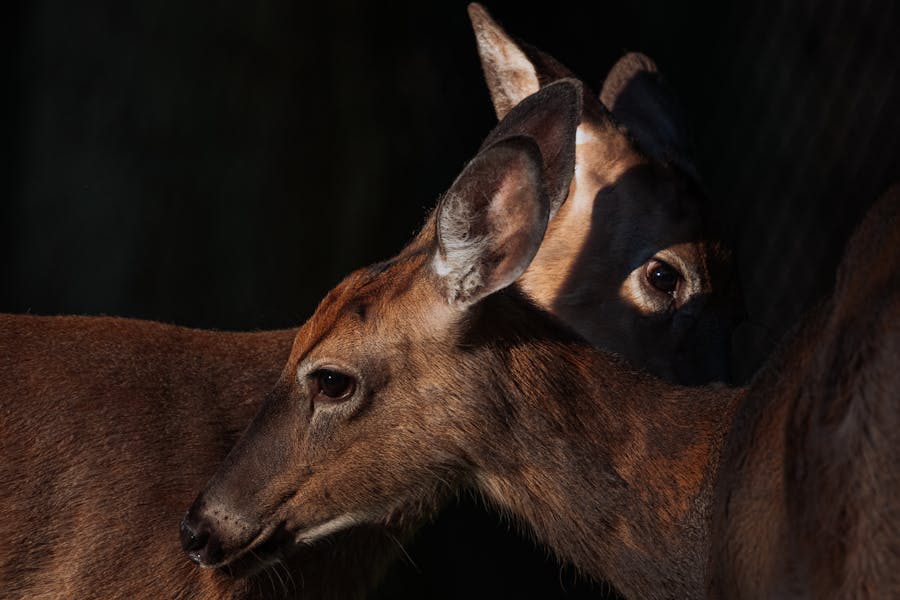Pollution is a pressing global issue with far-reaching consequences for human health and the well-being of our planet’s diverse ecosystems. While its detrimental effects on human populations are widely recognized, the impact of pollution on animals is equally profound and often overlooked. From the depths of our oceans to the skies above, animals of all shapes and sizes face unprecedented challenges due to the contamination of their habitats by pollutants. In this article, we delve into the intricate relationship between pollution and animals, exploring the various types of pollution and their specific impacts on wildlife. By understanding these dynamics, we can better appreciate the urgency of addressing pollution and safeguarding the delicate balance of life on Earth.
Types Of Pollution
Pollution comes in various forms, each with detrimental effects on animals and ecosystems. Here’s an in-depth look at the different types of pollution:
Air Pollution: Air pollution encompasses various pollutants, including particulate matter, nitrogen oxides, sulfur dioxide, carbon monoxide, and volatile organic compounds. These pollutants are primarily emitted from industrial facilities, vehicles, and agricultural activities. They can undergo chemical reactions in the atmosphere to form secondary pollutants such as ozone and smog. For animals, exposure to air pollution can lead to respiratory issues such as asthma, bronchitis, and lung damage. Additionally, airborne pollutants can settle on land and water surfaces, contaminating habitats and food sources for wildlife.
Water Pollution: Water pollution occurs when harmful substances enter aquatic ecosystems, including rivers, lakes, oceans, and groundwater. Sources of water pollution include industrial discharge, agricultural runoff, sewage effluent, and oil spills. Pollutants such as heavy metals, pesticides, fertilizers, plastics, and pharmaceuticals can devastate aquatic animals. These pollutants can poison marine life, disrupt reproductive cycles, and impair immune systems. Moreover, water pollution can degrade habitat quality, leading to biodiversity and ecosystem health declines.
Land Pollution: Land pollution, also known as soil pollution, is the contamination of land surfaces by hazardous substances. Familiar sources of land pollution include industrial waste disposal, mining activities, landfill leachate, and improper agricultural practices. Pollutants such as heavy metals, pesticides, herbicides, and plastics can accumulate in soil and impact animals through direct ingestion or indirect exposure. Land pollution can lead to habitat destruction, soil degradation, and biodiversity loss. In agricultural areas, pesticide runoff can contaminate waterways, exacerbating water pollution and affecting aquatic ecosystems.
Noise Pollution: Noise pollution, although less visible than other pollution forms, can significantly impact animals. Human activities such as urban development, transportation, and industrial operations can generate high levels of noise pollution in natural habitats. For animals, excessive noise can interfere with communication, navigation, and predator detection. In terrestrial environments, noise pollution can disrupt mating behaviors, feeding patterns, and sleep cycles. In aquatic environments, underwater noise from ships, sonar, and seismic surveys can cause stress and disorientation in marine mammals and fish.
Light Pollution: Light pollution is the excessive or misdirected artificial light that disrupts natural light cycles in ecosystems. Urban areas, industrial sites, and outdoor lighting fixtures contribute to light pollution, which can extend far beyond urban centers. Artificial light can interfere with foraging, navigation, and reproduction for nocturnal animals, such as bats, owls, and certain insects. Light pollution can disrupt circadian rhythms, alter behavior patterns, and lead to habitat fragmentation. In coastal areas, artificial light can disorient sea turtle hatchlings, causing them to stray from their natural migration paths.
The Effects On Animals
The effects of pollution on animals can be wide-ranging and devastating, impacting various aspects of their health, behavior, and survival. Here’s a closer look at how pollution affects animals:
Respiratory Issues:
Air pollution, particularly from particulate matter, nitrogen oxides, and sulfur dioxide, can lead to respiratory problems in animals. Inhalation of these pollutants can irritate the respiratory tract, leading to coughing, wheezing, and difficulty breathing. In severe cases, air pollution can cause lung inflammation, pulmonary edema, and respiratory infections in animals.
Damage to Organs:
Exposure to certain pollutants, such as heavy metals and toxic chemicals, can damage animals’ internal organs. For example, heavy metals like lead, mercury, and cadmium can accumulate in animal tissues over time, leading to organ dysfunction and failure. Similarly, exposure to pesticides and industrial chemicals can cause liver damage, kidney toxicity, and neurological disorders in animals.
Changes in Behavior:
Pollution can also affect animals’ behavior, altering their normal patterns of activity and interaction with their environment. For instance, noise pollution from human activities can disrupt animal communication, changing mating behaviors, territoriality, and predator-prey dynamics. Light pollution can disrupt nocturnal animals’ natural behaviors, such as foraging, navigation, and reproduction, by interfering with their circadian rhythms.
Habitat Destruction:
Pollution, especially land and water pollution can degrade and destroy animal habitats, making them uninhabitable for many species. For example, industrial pollution and urban development can lead to habitat loss and fragmentation, forcing animals to migrate or adapt to new environments. Pollution in aquatic ecosystems, such as oil spills and chemical contamination, can devastate marine habitats like coral reefs, mangrove forests, and estuaries, impacting the myriad species that rely on these habitats for survival.
Poisoning and Toxic Exposure:
Many pollutants found in the environment, including pesticides, heavy metals, and industrial chemicals, are toxic to animals. These pollutants can enter animals’ bodies through ingestion, inhalation, or dermal contact, leading to poisoning and toxic effects. Symptoms of poisoning in animals may include lethargy, weakness, vomiting, diarrhea, and neurological symptoms. Chronic exposure to low levels of toxins can also impair animal immune function, reproductive health, and overall fitness.
Disruption of Ecosystems:
Pollution can disrupt the delicate balance of ecosystems by altering species interactions, nutrient cycles, and ecosystem dynamics. For example, water pollution can lead to eutrophication, causing algal blooms and oxygen depletion in aquatic ecosystems, harming fish, shellfish, and other aquatic organisms. Air pollution can impact plant health and productivity, affecting food availability for herbivores and ultimately impacting higher trophic levels in terrestrial ecosystems.
Impact On Ecosystem Resilience
Pollution can significantly impact ecosystem resilience, which refers to the ability of an ecosystem to withstand and recover from disturbances while maintaining its structure, function, and biodiversity. Here’s how pollution affects ecosystem resilience:
Pollution, especially chronic exposure to contaminants like heavy metals, pesticides, and industrial chemicals, can lead to declines in species diversity within ecosystems. Certain species may be more sensitive to pollutants and experience population declines or local extinctions, reducing overall biodiversity. A decrease in species diversity weakens the resilience of ecosystems by reducing their capacity to adapt to environmental changes and disturbances.
Pollution can disrupt the intricate network of species interactions within ecosystems, such as predator-prey relationships, resource competition, and mutualistic interactions. For example, exposure to pollutants may weaken the immune systems of certain species, making them more susceptible to predation or disease. Additionally, pollution-induced declines in key species, such as pollinators or keystone species, can have cascading effects throughout the ecosystem, destabilizing ecological processes and reducing resilience.
Certain pollutants, such as nitrogen and phosphorus from agricultural runoff and industrial effluents, can disrupt ecosystem nutrient cycling. Excessive nutrient inputs can lead to eutrophication, causing algal blooms, oxygen depletion, and nutrient imbalances in aquatic ecosystems. These disruptions in nutrient cycling can degrade water quality, alter habitat conditions, and reduce the availability of essential nutrients for plants and animals, compromising ecosystem resilience.
Pollution can degrade and destroy habitats, diminishing the capacity of ecosystems to provide essential services such as water purification, carbon sequestration, and flood regulation. For example, deforestation and land pollution can lead to soil erosion, biodiversity loss, and reduced carbon storage capacity. These habitat losses and declines in ecosystem services weaken the resilience of ecosystems by reducing their ability to buffer against environmental stressors and recover from disturbances.
Pollution can exacerbate the impacts of climate change on ecosystems, making them more vulnerable to extreme weather events, temperature fluctuations, and habitat shifts. For instance, air pollution can contribute to global warming by releasing greenhouse gases like carbon dioxide and methane, amplifying climate-related stressors such as heat waves, droughts, and storms. These climate-induced disturbances further challenge the resilience of ecosystems already burdened by pollution.
Conclusion
Pollution poses a significant threat to ecosystem resilience, compromising their ability to withstand and recover from disturbances. From declining species diversity to disrupted nutrient cycling and habitat degradation, pollution’s impacts reverberate throughout ecosystems, undermining their capacity to adapt and thrive. Addressing pollution is essential for safeguarding ecosystem resilience and preserving biodiversity for future generations.
FAQ’s
What are the effects of air pollution on wildlife?
Air pollution can harm wildlife by causing respiratory problems, lung damage, and cardiovascular issues. It can also lead to changes in behavior, habitat degradation, and population declines.
How does plastic pollution affect marine animals?
Ocean plastic pollution can harm marine animals through ingestion, entanglement, and habitat destruction. Animals may mistake plastic debris for food, leading to choking, intestinal blockages, and starvation.
What are the long-term consequences of pollution on animal populations?
Long-term consequences of pollution on animal populations may include habitat loss, declines in biodiversity, increased vulnerability to diseases, reproductive issues, and population declines or extinctions.










